Chilean gerilla. How the communists fought against Pinochet
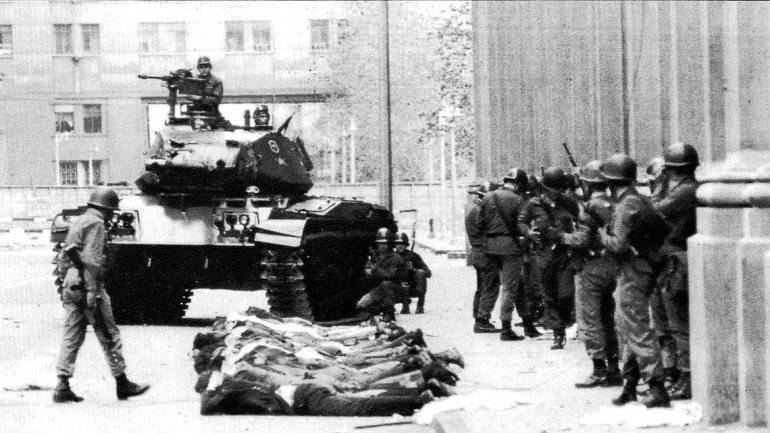
When General Augusto Pinochet came to power, mass repressions began in Chile against leftist forces - the socialists and the communists. According to historians, only in the first month after the military coup, about 30 thousands of people were killed. Perhaps the most famous victim of Pinochettov was the world-famous singer Victor Hara, who was brutally murdered in a concentration camp set up at the stadium in Santiago. Chile was hit hard by the left. The repressive policies of Pinochet were approved and covered by the United States of America, which viewed the actions of the Chilean junta as opposition to the further expansion of Soviet political influence in the New World. Strengthening pro-Soviet sentiment in Latin America in Washington, as you know, was feared like fire.
The harsh actions of the military junta stunned the Chilean left and did not let them quickly mobilize their forces for resistance. Yes, and at first this resistance could not lead to anything - the forces were too unequal. On the side of Pinochet was a powerful army, financial support for the Chilean oligarchs and the United States, special services. In turn, the Chilean left-wing organizations suffered the most serious losses from the actions of Pinochettovo in the first months after the coup. Thus, in the course of the military coup practically all the activists of the Left Revolutionary Movement (MIR), the largest radical left organization of Chile, were killed or imprisoned (the Communist Party was in positions more moderate than MIR). A serious blow was struck to the Communist Party of Chile.
The only method of resistance that the left could oppose to the military regime was guerilla warfare. But, unlike many other countries in Latin America, in Chile the traditions of the “guerrilla” were absent. This in Colombia, Guatemala, Bolivia, Peru, Nicaragua, El Salvador had their own rich traditions of the guerrilla war of the communist organizations against pro-American governments. Chilean communists had no partisan war experience. Yes, and the geographical location of Chile significantly hampered the deployment of partisan resistance to Pinochet. It is enough to remember what this country looks like on the map - a narrow and long strip of land between the Andes and the Pacific Ocean. There were no such forests as in Colombia. In the open space of the highlands, the partisans could not act for a long time - they would have been overtaken by air force strikes, and then the units of the government army would have arrived.
However, almost immediately after the military coup among the surviving Chilean leftists, who managed to escape and hide in the underground or leave the country, a discussion began on the possible ways of deploying the anti-Pinochet struggle in the country. Great support for the Chilean Communists was provided by Cuba, which took a kind of patronage over the surviving remnants of the Chilean left-wing movement.
Back in the middle of the 1960s, the Left Revolutionary Movement (MIR) was created, quickly becoming the largest left-radical organization in the country. MIR was guided by the Cuban experience of the revolution, and the only possible form of political struggle was an armed uprising with the aim of seizing power and building socialism. At the first stage of its existence, however, MIR activists concentrated their efforts on leaflet campaigns and periodic clashes with police patrols. When a military coup occurred in 1973 in Chile, the members of the MIR, of course, became one of the main targets of political repression and reprisals.
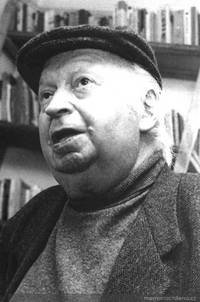 At the same time, some Peacekeepers and Communists managed to leave Chile. They took political refugees in Cuba. The "Island of Freedom" Chileans took almost with open arms. Chile immigrants received housing, they were employed by Cuban enterprises, but the Cuban authorities did not tire of reminding Chilean like-minded people that in fact they should wage an armed struggle against the Pinochet regime and not sit out in emigration. More serious accusations were brought against the leadership of the socialist and communist parties of Chile - that they could not properly organize the defense of the government of El Salvador Allende and lost the battle for the socialist future of Chile. However, in July 1974, the meeting between Cuban leader Fidel Castro and the leaders of the Communist Party of Chile, Volodya Teitelbomem (pictured) and Rodrigo Rojas, took place.
At the same time, some Peacekeepers and Communists managed to leave Chile. They took political refugees in Cuba. The "Island of Freedom" Chileans took almost with open arms. Chile immigrants received housing, they were employed by Cuban enterprises, but the Cuban authorities did not tire of reminding Chilean like-minded people that in fact they should wage an armed struggle against the Pinochet regime and not sit out in emigration. More serious accusations were brought against the leadership of the socialist and communist parties of Chile - that they could not properly organize the defense of the government of El Salvador Allende and lost the battle for the socialist future of Chile. However, in July 1974, the meeting between Cuban leader Fidel Castro and the leaders of the Communist Party of Chile, Volodya Teitelbomem (pictured) and Rodrigo Rojas, took place. Castro offered the Chilean communist leaders something that was difficult to refuse - to organize a full-fledged military training of the Chilean communist youth in the Cuban military schools. And it was not about some short-term courses of the “young partisans”, but about a full-fledged military education, after which Chileans would receive officer ranks of the Revolutionary Armed Forces of Cuba. Most of the young Chilean communists were enrolled in the Camilo Cienfuegos military school, which was considered elite. Here they had to undergo a one-year training and become junior officers of infantry and artillery units. They also taught Chileans in other specialties, including naval and military ones. In fact, under the auspices of Fidel Castro, a parallel Chilean “red army” was created in Cuba. By the way, the Chilean communist youth was trained in the GDR - in the political school named after Wilhelm Pick. Another group went to get a military education in Bulgaria. Subsequently, it is the graduates of the Bulgarian military schools that will become the basis of the most combat-ready partisan units.
However, throwing Chilean communists, even those who received military training, right in Chile — to fight a well-armed and trained Pinochet army would be a fatal mistake. Fidel Castro understood this perfectly. Therefore, the Cuban command decided to conduct a "battle run-in" of the Chilean communists. The best place for this was Nicaragua, where the war between the Sandinists and their opponents was already in full swing. Thus was formed the legendary "Chilean Battalion", which fought in Nicaragua on the side of the Sandinistas.
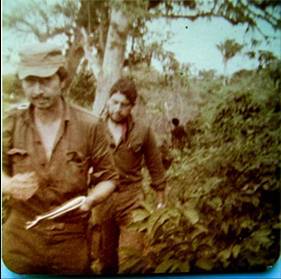 At the beginning of 1979, the first detachment of Chilean Communists entered Nicaragua. It should be noted here that the arrived Chileans, who by that time were able to get professional military education in Cuba, became an excellent support for the Sandinistas, especially considering that the Sandinistas felt a great need for military specialists — gunners, anti-aircraft gunners, while infantry commanders had many and their own. Chilean internationalists participated in most major Sandinistas battles, including directly in the capture of the Nicaraguan capital Managua. One of the fighters, the Sandinists, who broke into the Somoza bunker, was Galvarino Apablasa Hera (in the photo) - one of the future leaders of the partisan movement in Chile. He fought in Nicaragua and Raul Pelhegrin Friedman - the future commander of the Patriotic Front named after Manuel Rodriguez - the largest partisan organization in Chile. After the victory of the Sandinists, many Chilean communists remained in Nicaragua - to continue serving as part of the Nicaraguan revolutionary armed forces in command and instructor positions.
At the beginning of 1979, the first detachment of Chilean Communists entered Nicaragua. It should be noted here that the arrived Chileans, who by that time were able to get professional military education in Cuba, became an excellent support for the Sandinistas, especially considering that the Sandinistas felt a great need for military specialists — gunners, anti-aircraft gunners, while infantry commanders had many and their own. Chilean internationalists participated in most major Sandinistas battles, including directly in the capture of the Nicaraguan capital Managua. One of the fighters, the Sandinists, who broke into the Somoza bunker, was Galvarino Apablasa Hera (in the photo) - one of the future leaders of the partisan movement in Chile. He fought in Nicaragua and Raul Pelhegrin Friedman - the future commander of the Patriotic Front named after Manuel Rodriguez - the largest partisan organization in Chile. After the victory of the Sandinists, many Chilean communists remained in Nicaragua - to continue serving as part of the Nicaraguan revolutionary armed forces in command and instructor positions. Meanwhile, in 1980, the Communist Party of Chile officially announced the transition to an armed struggle against the Pinochet regime. By this time, certain left-radical groups had long organized periodic raids on the territory of Chile. Already in 1975, the rebels managed to carry out 132 guerrilla operations. First of all, they attacked the warehouses and barracks of the army and carabinieros to capture weapons. Guerrilla bases were equipped in the mountains, in the territory of neighboring Argentina. Here the partisans trained and lived in the intervals between raids. But in 1976, after a military coup d'état occurred in Argentina, the Chilean partisan bases in the Argentine mountains were destroyed during a raid by the Argentine air forces. The bombardment of the bases was a major blow to the rebel movement. For some time in Chile, there was a relative lull. However, the 11 of May 1983 of the year in Santiago hosted the first major anti-Pinochet show. The demonstrators were cruelly dispersed by the carabineers, two of the protesters were killed, 29 people were injured, 652 people were arrested.
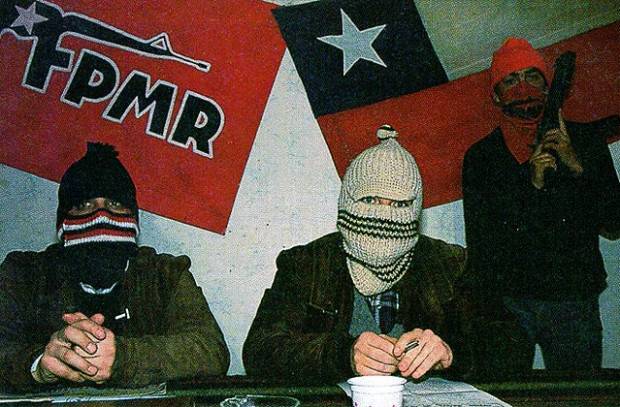
In June, the regular meeting of the Chilean left was held in Havana on 1983, at which it was proposed to perform all the military operations of the Communist Party of Chile on behalf of the “Team Manuel Rodriguez”. This is how the Patriotic Front of Manuel Rodriguez (PFMR) emerged, becoming the largest radical left-wing armed organization in Chile. The front got its name in honor of Manuel Rodriguez Erdois (1785-1818) - one of the fighters for the independence of Chile from the Spanish colonialists. The creation of the PFMR marked the beginning of a new phase in stories anti-pinochet military resistance. Already at the end of the summer of 1983, five commanders penetrated into Chile, who were to lead the partisan detachments and begin to launch an armed struggle against the regime.
The direct support of the PFMR with weapons and money was carried out by Cuban special services. The backbone of the front commanders was made up of the very Chileans who were trained in military schools of Cuba and Bulgaria, and also fought in Nicaragua on the side of the Sandinistas. That is, these were experienced people who possessed military professions and who differed in their professional qualities from the Chilean partisans of the late 1970 model. The PFMR has become the center for the unification of all Chilean left forces, ready to fight against the Pinochet dictatorship with arms. Communists, socialists, left radicals joined the front lines, and disputes on ideological topics were postponed “for later” - in this the front repeated the path of 1950's Cuban partisans. The number of PFMR rapidly increased. Already in 1985, it was about 1500 armed fighters, united in 500 combat groups.
Already in 1984, the PFMR began combat operations against Chile's government forces and carabinieri. In addition, the fighters of the front began to make regular attacks on the branches of the Chilean ultra-right parties and movements, which formed the basis of support for the Pinochet course in Chilean society. Militants of the PFMR attacked the printing houses of right-wing newspapers, party offices, and warehouses of campaign literature. In 1987, attacks on police patrols and Carabinieri patrols began. Soon the partisans switched to attacks on the armories of police and army units. Another important activity of the Chilean partisans were expropriations. In the first half of 1988 alone, did the partisans conduct 193 expropriations. North American companies that, under Pinochet, further strengthened their positions in the country, became the object of partisan attacks. The situation in Chile is rapidly heating up. By 1989, entire regions existed in a number of Chilean provinces where government forces did not actually control the situation. The police and the army could patrol these territories during the day, but at night they preferred not to appear there, not wanting to be attacked by the partisans.
It should be noted that, despite the formal status of the armed wing of the Communist Party of Chile, in fact, the Patriotic Front of Manuel Rodriguez quickly became an absolutely autonomous organization. This was also explained by the fact that the views of the PFMR high command were much more radical than the positions of the pro-Soviet communist leaders. The main information body of the PFMR was El Rodriguista, a journal edited by Alex Voitovich.
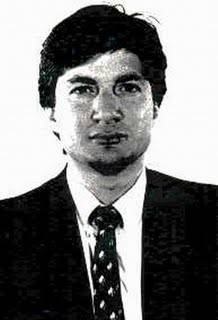
Financial and logistical support to the PFMR was still provided by Cuban special services, but GDR special services also actively participated in helping Chilean partisans. The PFMR Commander Raul Pellegrin (pictured) repeatedly visited the GDR, where he met with East German representatives. But the money that Cuba donated was still not enough for the needs of the partisans. Therefore, the PFMR dealt with expropriations, and then turned to the practice of wrapping up entrepreneurs with a “revolutionary tax” and abducting wealthy people and their relatives, who were released in exchange for ransom. Sometimes high-ranking soldiers became victims of abductions. For example, in 1986, guerrillas kidnapped Colonel Mario Aberle Rivadeneiro, the protocol chief of the military garrison of Santiago. However, after three days he was released, and without any ransom — apparently, by kidnapping the colonel, the partisans demonstrated that they didn’t have any problems “to take” even major military officials. 7 September 1986 Propulsion Patriotic Front them. Manuel Rodriguez made an attempt on Pinochet himself. Five of the general’s bodyguards were killed, but he himself survived.
By the end of 1980's The economic situation in Chile has deteriorated significantly, leading to massive popular demonstrations. At the same time, the Americans also began to put pressure on Pinochet - the world situation changed and they no longer had the reason to support the odious military dictator. The general agreed to the 5 plebiscite of October 1988 of the year. Contrary to his expectations, more than 55% of Chileans voted against the preservation of military dictatorship. Given that the United States was watching, Pinochet was forced to begin the procedure of transferring power to a civilian government. 11 March 1990, Augusto Pinochet, resigned as head of state. However, the departure of Pinochet did not mean the cessation of military operations by the PFMR, which now spoke out with anti-American slogans and attacked the facilities of American companies in Chile. Only in 1999, the front stopped its military operations.
Information